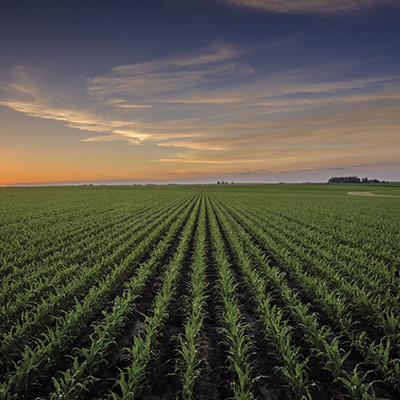Big Moves In Precision
As we move further into the technology revolution, the technology is catching up to the ideas and dreams many had about of how precision technologies could be integrated into the ag industry. We see a parallel revolution in the consumer market as smartphones and iPads change how technology is incorporated into peoples’ day-to-day lives.
One of the biggest changes for precision technologies is the impact of a much wider array of GPS correction sources. With more options related to affordability and the level of precision offered, technologies like autosteer, on-the-go sensing and guidance-related systems are seeing rapid adoption. At the same time, some of the more traditional GPS/non-RTK precision services are becoming standard in parts of the Midwest.
Use Of Guidance Systems, RTK
Between 2009 and 2011, the use of GPS guidance systems with auto control/autosteer almost doubled, rising from 28% of the materials custom applied in 2009 to 41% in 2011. This corresponded to a similar decrease in the use of manual control/lightbars, dropping from 68% of the materials applied in 2009 to 46% in 2011. The impetus for this change to autocontrol/autosteer guidance systems has been a wider availability of types of GPS corrections so growers and dealers can choose what best suits their individual needs. With the improved accuracy in real time signals, many new agricultural technologies are now poised to take off including not only autosteer guidance systems but also variable-rate seeding, on-the-go sensors and auto nozzle shut offs.
We asked those using autocontrol GPS guidance systems what type of correction they were using (see sidebar for a guide to terminology). The most common correction was Wide Area Augmentation System (WAAS), with almost two-thirds of the autocontrol guidance system users indicating they used this free service available through the FAA. A quarter of the respondents (25%) were purchasing a correction service from an RTK array/cluster such as John Deere and Trimble, while 21% were purchasing satellite correction such as OmniSTAR XP and StarFire2.
For those who are far from stationary bases or who have areas in their fields with poor signal strength, purchasing an individual base station is often the best choice. At this time, 14% of those using autoguidance have purchased their own RTK base station, either a stationary one they can place for the best signal in their market area or a portable base station that gets moved as they work on different farms/areas.
Two areas that are just at the initial phase of adoption are RTN (Real Time Networks), which use a mesh layout of base stations to provide better service coverage, and CORS (Continually Operating Reference Stations), which work on cell phone data plans to provide wireless service not dependent on line-of-sight radio waves. Both are currently being used by fewer than 5% of the respondents.
Barriers To Growth
Despite the excitement of the wide array of Differential GPS for guidance systems and all that it brings, there are still many areas in the U.S. where precision technologies have not yet taken off. The Midwest offers the advantage of often large, unobstructed views, many service providers and large acreages where the cost and learning curve for adopting precision technology can be more easily justified. In other parts of the U.S., the cost of adoption is still high.
Survey respondents were asked to rate a series of issues as to how significant a barrier they were to the growth and expansion of precision agriculture in their area. This was the same list of barriers that we asked about in 2009, 2008 and 2004. Figures 9 and 10 show the percentage of respondents who agreed with each customer and dealer issue listed (rated a four or five out of five, where five is “strongly agree that this is a barrier”).
The strong ag economy is evident in the ratings this year over two years ago. Though farm income was still the biggest customer issue impacting precision service adoption, the levels have fallen dramatically from 50% of the respondents agreeing it was a barrier in 2009, to only 35% in 2011.
The impact of improvements in technology and the usability for the end-user is evident in the ratings. The time involved in interpreting data and making decisions is becoming less of a barrier as technology becomes more user-friendly (dropping from 26% of the respondents saying it was a barrier in 2009 to only 19% in 2011). Other customer barriers are back to 2008 levels.
Most of the dealer-specific issues were no more important a barrier this year than they were a year ago, with several issues actually being mentioned by fewer respondents. Cost and fees continue to be the biggest barrier to dealer adoption (55% of the respondents agreeing). Almost the same number (54%) felt that the costs were high due to rapidly changing precision equipment, resulting in continual pressure to buy better technology and spend more to be able to provide the services demanded.
As this technology improves, however, some of the barriers are decreasing. As usability improves, it becomes less of a barrier to find employees who can deliver a precision package to customers (dropping from 49% of the respondents in 2009 to 44% in 2011). Demonstrating value to customers is decreasing as technology improves and becomes more accepted (dropping from 46% to 42% from 2009 to 2011). And as technologies start converging to standards, compatibility issues are becoming less of a problem for dealers (dropping from 49% to 41% of the respondents agreeing that it’s a barrier from 2009 to 2011).
Summary
As we move out of the early adoption phase of precision agriculture to more precise measurements and technologies, more compatibility between different technologies and better user interfaces, site-specific farming techniques are coming into their own. Similar to the adoption of smartphones and other wireless technologies among consumers, this then allows these technologies to become integral components of the ag industry.






